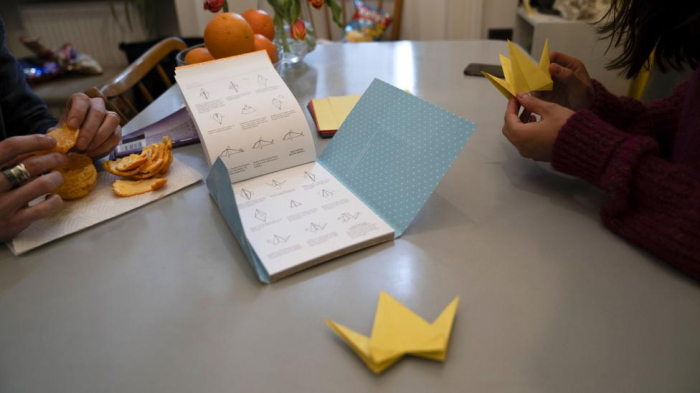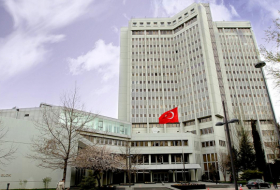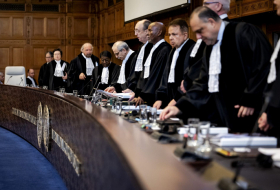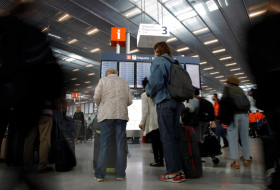Amid crisis and disruption, we crave the calm of normality. But can we ever really define what “normal” is?
I’m writing this in my home office, wearing my bathrobe. I am currently placed under a stay-at-home order, which requires me to stay in my house unless I need to travel for very specific reasons, like shopping or health needs. It also means I no longer have to keep to office dress codes. Besides my husband and neighbour, I haven’t spent physical time with anyone in more than a month. I speak with my parents over video chat, and call other family members over Facebook Messenger. I stay abreast of friends’ lives thanks to their many regular updates on social media. I do most of my shopping online. I spend a fraction of my day outside.
How abnormal! And yet even before Covid-19 hit, I often sat writing in my home office, staying connected with my family and friends via various technologies, shopping online. The stay-at-home order may be new, but I can’t pretend that social distancing is unprecedented. Our technologies and social media have been distancing us from each other for years.
Of course, I am one of the lucky ones. Around us, local economies are faltering. Healthcare systems are strained. People continue to unexpectedly lose their loved ones, and regret that they couldn’t be with them in their final moments.
This has led many of us to wonder about normality: when will things “return to normal,” and what will a “new normal” look like? As one article discussing the disruptions Covid-19 has brought to Life As We Know It puts it, “It’s tempting to wonder when things will return to normal, but the fact is that they won’t – not the old normal anyway. But we can achieve a new kind of normality, even if this brave new world differs in fundamental ways.”
By this standard, the old normal is the one in which our healthcare systems and governments are not prepared to deal with things like Covid-19; the new normal, in contrast, is mostly like the old normal, except in this one we are prepared for global pandemics.
The new normal, in other words, changes what was wrong but keeps what was right with the old normal. But if the old normal was wrong, then why did we call it normal? Similarly, if the new normal is different from the old one, how can we pretend we’re still dealing with “normal”?
What does “normal” really mean, anyway?
***
The word “normal” appears straightforward enough. But like many of our words, as soon as we begin thinking about it, it starts to fall apart at the seams.
Take, for instance, the first entry in Merriam-Webster’s dictionary definition of normal: “conforming to a type, standard, or regular pattern”, as in “He had a normal childhood”. In the same vein, the entry continues, the word means “according with, constituting, or not deviating from a norm, rule, or principle.”

Even before the current crisis, many of us worked from home, and relied on technology to keep us connected (Credit: Reuters)
In a fascinating Philosophy Talk podcast, philosopher Charles Scott notes that the word normal possesses a certain kind of authority or “power to divide and distinguish things”. The word sneakily passes from description to prescription. We start with a widely observable fact (most people are heterosexual) and quickly construct a hierarchy with our observable fact placed at the very top (heterosexuality is the best/most natural orientation to have). The fact with which we started our process of categorisation becomes the standard or norm, and everything that diverges from that norm is not just different but abnormal and therefore less than normal.
But as Scott asks, why do we judge normal to be better than abnormal? Being overweight is fairly normal in the United States – many doctors, however, seem to encourage their patients to be abnormal in this regard. What he is getting at is that our concept of normal pulls double duty; it tells us that what is, ought to be.
As sociologist Allan Horowitz points out, the dilemma that “normality” forces upon us is that “in most cases no formal rules or standards indicate what conditions are normal”. In the absence of such rules, those who wish to identify normality will normally turn to one of three different definitions. The first is the statistical view, “where ‘the normal’ is whatever trait most people in a group display”. Normal is what is typical, what most people do – which means it is impossible for any individual to be normal.
Most people have two legs and the ability to breathe, and possess desires for sociality so these conditions are seen as normal. The trouble with seeing normal in this way is that it may trick us into accepting statistically widespread phenomena as good. A majority of Nazi Germany’s citizens, Horowitz notes, supported policies of racism and genocide in the 1930s and 1940s. Was Nazism, then, a “normal” philosophy for humans to hold?
The second way of defining “normal”, says Horowitz, is as some sort of ideal, which comes through in the word’s etymology. In Latin, norma referred to a carpenter’s square, which assisted tradesmen in establishing a perfect right angle. The norm provided a concrete standard that, if followed, allowed the user to reproduce a specific pattern. Normal-as-ideal, then, might be in harmony with normal-as-ubiquitous, but it might be quite different. So, for instance, Nazism may have been widespread in Germany, but it was not normal because it did not live up to the ideal society we wish to achieve. On the other hand, random acts of kindness, even when they are in short supply, might be seen as normal in an aspirational sense: we want compassion to be a guiding norm in our societies.

When it comes to defining normality, we start with what we think is normal before even considering what is abnormal (Credit: Reuters)
The third definition looks to evolutionary science and defines normality “in terms of how humans are biologically designed by natural selection to function”. What is normal for a human being, then, are all those behaviours which makes it fit to thrive in its particular niche. The capacity to feel shame when betraying a loved one is normal in this scheme, as is the desire for one’s offspring to survive.
These three definitions of normality – (1) statistical, (2) aspirational, (3) functional – often end up sliding into each other during everyday conversation. This collapse is evident in many of our discussions about what “the new normal” will look like once Covid-19 is under control. The new normal will mean that most of us will go back to most of what we were doing before the pandemic struck (1), but that our societies will make changes for the better (2), which will end up being good for the survival of our communities (3).
So we kind of want to go back to where we were, but we also kind of don’t. We want things to be the same, but we also want them to be different. We want to return to normal but we know deep down that our journey won’t be a return so much as a departure.
The question, then, is why would you use the word “normal” at all?
***
The definition of “normal” might be hard to pin down, but its function is pretty clear: normal is safe. It’s familiar. In the aftermath of the devastation of World War One, Warren Harding’s presidential campaign promise was simple: “America's present need is not heroics, but healing; not nostrums, but normalcy.” Harding knew Americans wanted to get back to life as they knew it before war disrupted the flows and rhythms of their daily lives. He understood that in the face of fear, people long to go back to a time before the fear set in. His rhetoric connected with the public, which voted him into the White House on 2 November 1920.
Harding and his supporters were, we might say, nostalgic for the normal. Just like we are.
Nostalgia comes from two Greek words: nostos, meaning homecoming, and algia, meaning longing. To be nostalgic is to long for home. Swiss doctor Johannes Hofer first coined the term in his dissertation in 1688 “to define the sad mood originating from the desire to return to one’s native land”. Hofer believed his patients’ malady was that they longed for their homes. Nostalgia was originally a longing for a different place. Eventually it became a longing for a different time; more specifically, for a time that never existed. Nostalgia, writes Svetlana Boym, “is a romance with one’s own fantasy”.
In Longing For Paradise, Jungian analyst Mario Jacoby explores the human propensity to idolise a past normality which never existed.
We project backward into the Golden Twenties, the Belle Epoch in Paris, the time of the Wandervogel, the medieval city, Classical antiquity, or life “before the Fall”. The world of wholeness exists mostly in retrospect, as a compensation for the threatened, fragmented world in which we live now.
When it comes to defining normality, many people assume we start with an idea of what is normal and then, only as an afterthought, define what is abnormal. What if the exact opposite is the case? Maybe we start with something that feels off, something that causes us to experience a great deal of anxiety, and then we imagine a carefree time before these feelings set in. We don’t begin with normality and then categorise those instances where it is transgressed. We begin with all of those things that we instinctively feel are “abnormal” and then try to find comfort by erecting a norm that resolves our anxieties. We then locate this norm “in the past”, which gives us the benefit of claiming the norm as our own. This, after all, may seem easier to attain than one that requires all the hard work of creation. It is not something we need to build from scratch; all that is necessary is that we return home to it.
***
In a few months, my life will “return to normal”. I’ll sit at home writing essays in my lavender robe, staying in touch with family members via video chatting, and creating excuses for not working out as much as I’d like to.

Many of us fantasise about having spare free time to learn a new skill - but when that time appears, we can be too distracted to make the most of it (Credit: EPA)
For others, it will be a longer road. Some local businesses will reopen; others will shutter. Some people will never come back from the ICU. Some people will continue to struggle to fill their food pantries or pay their rent.
Some politicians will make renewed pledges about access to public healthcare. They will remind us to remain vigilant in the aftermath of a pandemic. Some people will agree with our politicians; some will despise them and take to social media to mock them. The more things change, the more they stay the same…
We will all continue to face daunting challenges for which we are not prepared. Scientists and medical providers will try and outsmart these challenges; they will succeed in some ways, but the challenges will keep coming. Modern medicine, as advanced as it is, is still, in the grand scheme of things, relatively young.
In the past 500 million years, our planet has witnessed five mass extinctions. Many scientists believe we are currently living through a sixth. At some point in the future, our species will no longer be considered the pinnacle of evolution, human beings having been surpassed by other forms of life.
And yet despite the enormous challenges we face on individual, local and global levels, we will remind ourselves and each other that we will get back to normal.
Perhaps if there is something to hold onto in all of this, it is not our definition of normality but our insistence on saying “we will”. We’re not sure what exactly the future will look like – which is why we prefer to discuss it in the familiar terms of the good ol’ days – but we know that it’s coming to greet us.
That we will continue on, that we will, has always been the norm not only of humanity, but of all life, as French philosopher Henri Bergson pondered in the early 20th Century. Bergson used the term élan vital to describe the mysterious impulse toward an open future that seems to animate all life. In fact, this impulse is what life is. Life, says Bergson, “since its origins, has been the continuation of one and the same impetus which separates itself into diverging lines of evolution”.
Whatever it is, however we name it, it seems to always be our normal: we will.
BBC FUTURE
More about: coronavirus















































